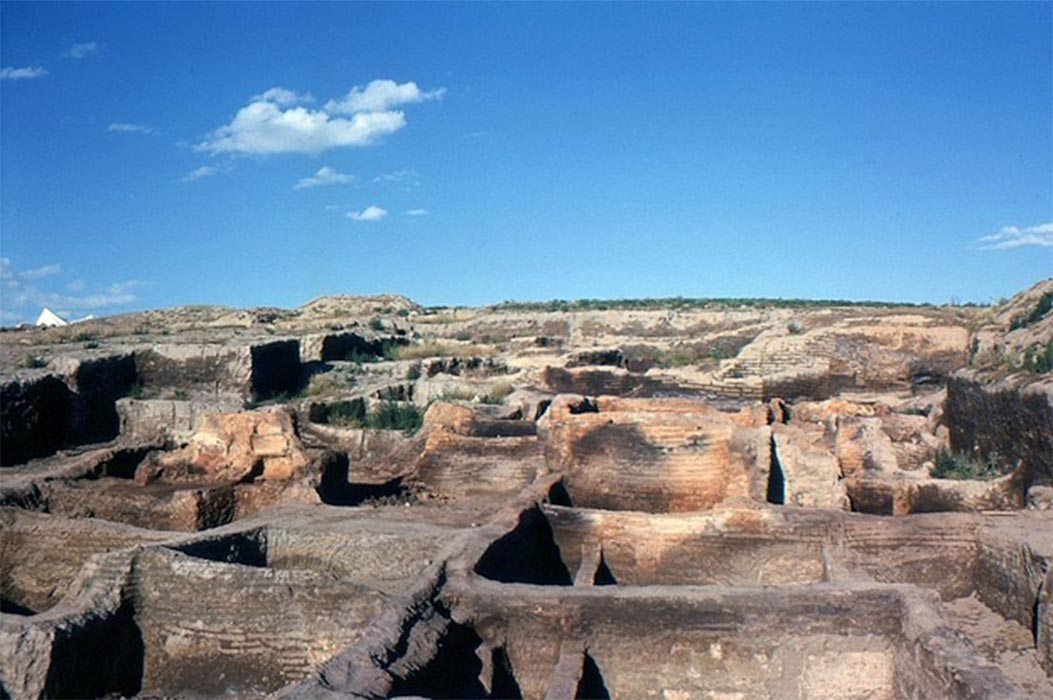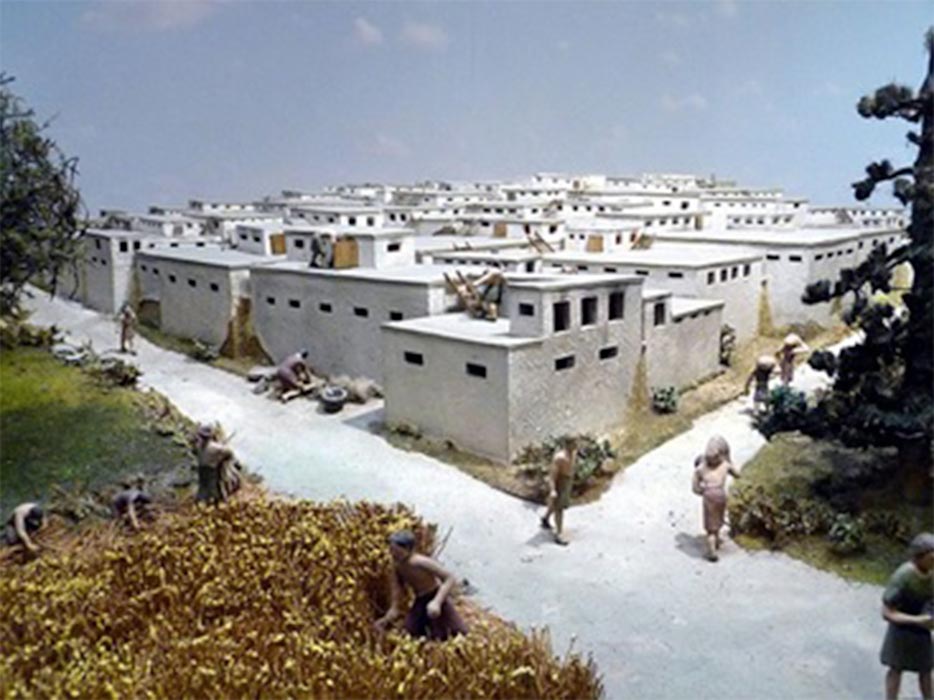
Turkey’s Catalhöyük: A Victim of Climate Change
These days, the dusty, sunbaked ruins of Çatalhöyük in central Turkey do not receive a lot of attention, except from tourists and archaeologists, but around 9,000 to 7,000 years ago it was a busy, bustling, Neolithic metropolis, boasting a farming civilization that was both unique and important in its day. However, having scarcely recovered from the end of the Younger Dryas Ice Age, the world was again hit with a climate catastrophe round about this time. The weather changed abruptly, leading to cooler, dryer summers for much of the Northern Hemisphere. Exactly what happened is anyone's guess, but the trigger is called the 8.2-Kiloyear Event, named after the fact that it happened 8,200 years ago.

Model of the Neolithic settlement at Catalhöyük (7300 BC ) Museum for Prehistory in Thuringia
(Wolfgang Sauber / CC BY-SA 4.0)
The 8.2-Kiloyear Event
One plausible explanation is that a huge melt water pulse occurred when the Laurentide Ice Sheet in North America, having already played a huge part in terms of changing global weather patterns at the end of the Younger Dryas, finally collapsed. Two immense glacial lakes, now called Ojibwa and Agassiz, located along the Canadian/North American border, suddenly drained into the North Atlantic. This released the equivalent of almost 50 Amazon Rivers’ worth of fresh water and disrupted the natural flow of the currents which bring warm equatorial water north, where it cools and then flows south again in a never ending circle that is recognized as an important regulator of current climate conditions. With that much cold glacial melt water suddenly dumped into the system, all kinds of terrible things happened. The result was what is today called climate change. The impact of such a sudden cooling of the earth's atmosphere might not have occurred as rapidly as it did a few thousand years earlier at the beginning of the Younger Dryas, but it would have had a devastating effect on the relatively new agricultural civilization that had begun to flourish in Anatolia, having spread out from Göbekli Tepe and then to Sumer, Egypt, and beyond.

Obsidian mirrors. Çatalhöyük, 6000-5500 BC. Museum of Anatolian Civilizations, Ankara. (Zde/ CC BY-SA 4.0)
Probably 10,000 or more people lived at Catalhöyük in southern Anatolia, and most of them seemed to have been obsessed with plaster. They used it to line the walls of their houses and to create works of art. They even coated the skulls of some of their dead with it. Above all, they used it to glaze their pottery, and that is why archaeologists today can learn a lot about how the early inhabitants of Çatalhöyük reacted to the climate change.

Detail of the mural showing the hind part of the aurochs, a deer and hunters (Omar hoftun / CC BY-SA 3.0)
Dietary Stress
The journal Science, report that a team of researchers led by biochemists Mélanie Roffet-Salque and Richard Evershed of the University of Bristol in the United Kingdom, and archaeologist Arkadiusz Marciniak at Adam Mickiewicz University in Poznań, Poland, decided to examine potsherds from Çatalhöyük to determine the content of animal fat that had soaked into the pots made by the ancient potters. Their thinking was that dramatic climate change might show up in the amounts and kinds of feed the animals had been eating before their butchered meat was stored in clay pots. In other words, they were looking for evidence of dietary stress.




